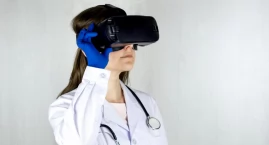Harvard has developed an AI tool that pinpoints genes and drug combinations capable of reversing disease in cells.

Researchers at Harvard Medical School have created an artificial intelligence tool that could transform drug discovery. PDGrapher can identify genes and drug combinations that restore diseased cells to health, opening new possibilities for treating cancer and neurodegenerative diseases. The research findings were published in Nature Biomedical Engineering.
Traditional drug discovery often involves testing hundreds of chemical compounds in the hope that one will prove effective.
“Traditional drug discovery is like tasting hundreds of ready-made dishes to find the one that just happens to taste perfect,” says Dr. Marinka Zitnik , lead author of the study and assistant professor of biomedical informatics at the Blavatnik Institute at Harvard Medical School. “PDGrapher works like a master chef who understands how a dish should taste and exactly how to combine ingredients to achieve the desired flavor.”
The new tool is a graph neural network that analyzes not only individual data points but also the connections between them. In biology, this means mapping the relationships between genes, proteins, and signaling pathways, and then predicting which drug combinations can reverse the disease process in cells.
Instead of testing every possible substance from the database, PDGrapher identifies only those targets most likely to restore healthy cell function. The model simulates what happens when specific genes or proteins are disabled and checks whether the cell will continue to behave as if it were diseased.
To test the model's effectiveness, the researchers used 19 datasets covering 11 cancer types. PDGrapher correctly identified targets for existing drugs and also identified additional candidates whose effectiveness is supported by recent studies. Examples include KDR (VEGFR2), a target for non-small cell lung cancer therapy, and TOP2A, an enzyme already targeted by chemotherapy, whose blocking can inhibit metastasis.
The model outperformed other tools – classification accuracy was up to 35% higher, and the time to obtain results was up to 25 times shorter than in the case of comparable methods.
See also:PDGrapher could play a particularly important role in diseases where multiple biological pathways drive progression, such as cancer and neurodegenerative diseases. The team is already testing it in studies on Parkinson's and Alzheimer's disease, as well as in collaboration with Massachusetts General Hospital on the rare X-linked dystonia.
“Our ultimate goal is to create a clear roadmap outlining possible ways to reverse the disease at the cellular level,” Zitnik emphasizes.
This discovery could significantly accelerate the development of personalized therapies. Because PDGrapher identifies specific targets for testing, it shortens testing time and costs, while also providing new insights into disease mechanisms. As the researchers note, the tool could become the foundation of a new paradigm in pharmacology—moving away from "one target, one drug" toward complex, precise therapeutic combinations.
politykazdrowotna





